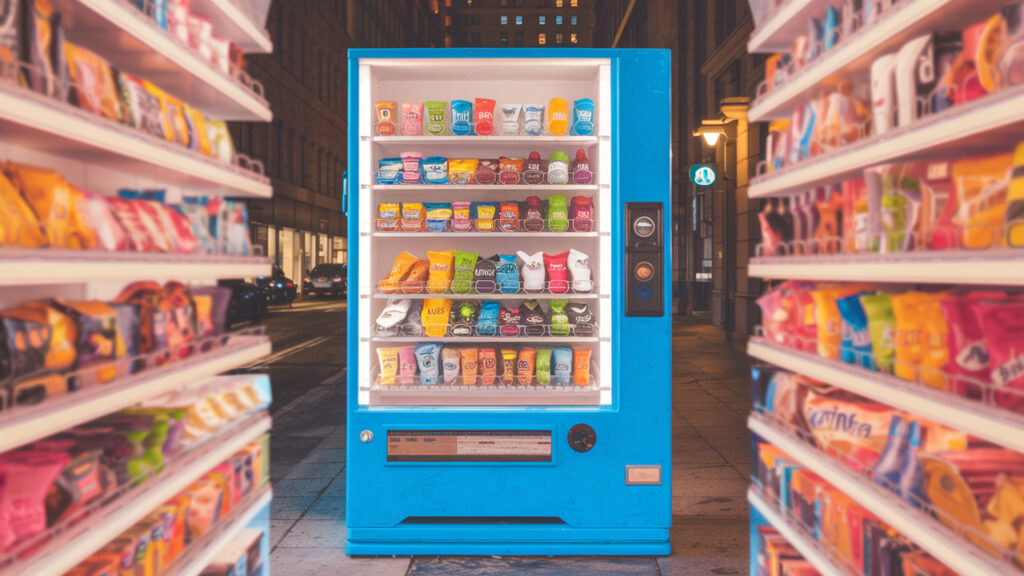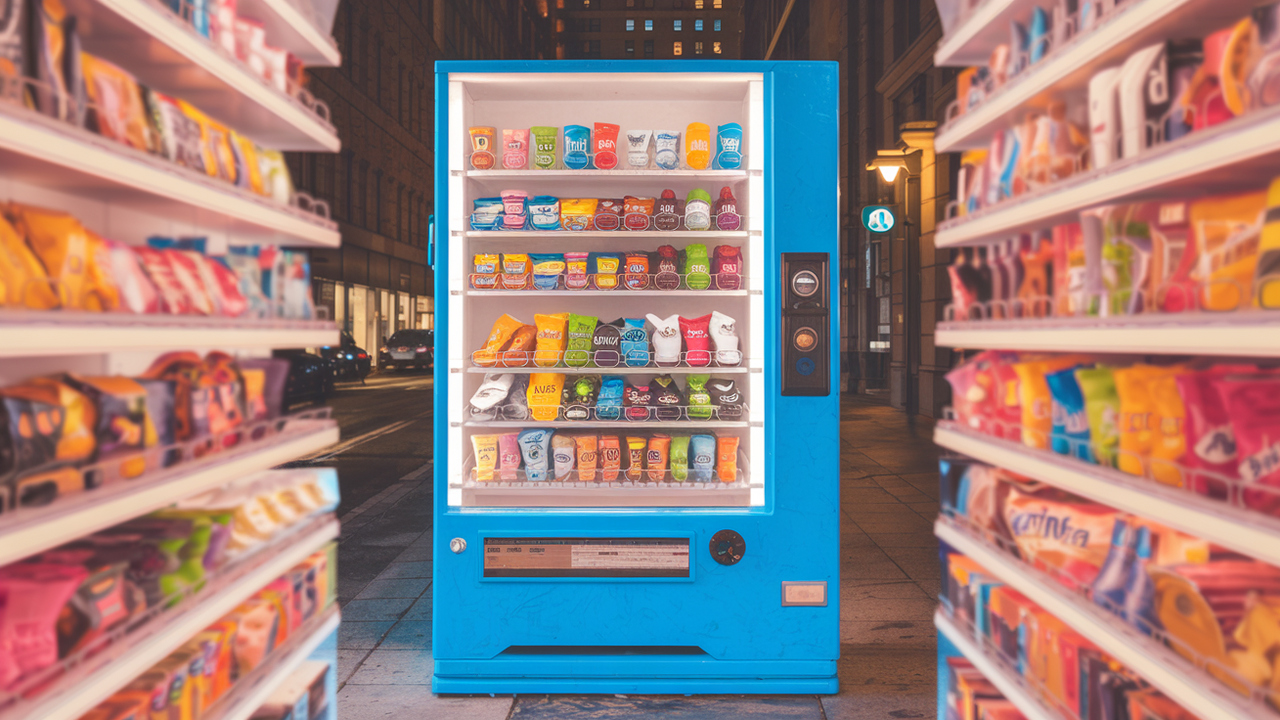How Much Do Vending Machines Make Per Month? (Real Numbers)
One of the most common questions I get asked is: “How much money do vending machines actually make per month?” I used to wonder the same thing before I bought my first machine. Now, after running multiple vending setups in offices, apartment buildings, and gyms, I can finally give you real numbers—not hype.
The truth is, your monthly income depends on three major things: location, machine type, and product selection. But to give you a clear picture, I’ll break it down into real examples from my own experience and what I’ve seen in the vending community.

Table of Contents
The National Average (According to Industry Data)
On average, a vending machine in a decent location earns $150 to $500 per month in gross revenue. That’s before expenses like restocking and maintenance. But in a high-traffic area, those numbers can easily climb to $1,000 or more per machine per month.
Here’s a quick breakdown:
- Low-traffic location: $50 to $200/month
- Medium-traffic location: $200 to $500/month
- High-traffic location: $500 to $1,500/month
- Exceptional location (airports, hospitals, schools): $2,000+/month
Office Vending Machine
I have a KoolMore snack and drink combo vending machine inside a local shared office space. It gets light-to-moderate foot traffic, around 30–50 people per day. The monthly numbers look like this:
- Gross revenue: $480/month
- Product cost: $160
- Profit before tax: $320/month
The machine itself was purchased from Amazon, delivered fully assembled with a card reader already installed.
View it here: KoolMore Combo Vending Machine on Amazon
Apartment Complex Machine
Another one of my machines is a VEVOR compact combo unit placed in the laundry room of a 120-unit apartment complex. It’s not as busy as a gym or office, but it still earns a steady passive income.
- Gross revenue: $310/month
- Product cost: $100
- Profit before tax: $210/month
I refill it once every 10–14 days. Low maintenance and always stocked with essentials like bottled water, trail mix, and energy drinks.
View it here: VEVOR Snack & Drink Vending Machine on Amazon
Gym Location
One of my best-performing locations is inside a 24-hour gym. I use a Seaga INF5C intelligent vending machine with a large product capacity. This one sells energy drinks, protein bars, and zero-calorie sodas.
- Gross revenue: $1,040/month
- Product cost: $360
- Profit before tax: $680/month
The card reader and remote monitoring make this a true hands-off machine. It’s my favorite.
Buy it here: Seaga INF5C Combo Machine on Amazon
Profit Margin Breakdown
On average, most vending operators aim for a 50% to 70% profit margin. Here’s a quick reference:
- Chips, candy, snacks = ~60% margin
- Cold drinks (water, soda, energy) = ~40–50% margin
- Healthy items or protein products = ~50–70% margin
- Specialty or local items = varies, sometimes higher
The more you buy in bulk, the better your margin. I use Amazon’s Subscribe & Save program and wholesale food vendors to restock efficiently.
What Factors Affect Monthly Revenue?
If you want to know how much a vending machine will make in your location, here are the top factors to consider:
- Foot Traffic – The more people walk by, the better.
- Hours of Operation – 24/7 access increases sales.
- Product Type – Offer items people want (energy drinks, snacks, protein bars).
- Payment Options – Card readers increase sales by up to 30%.
- Machine Appearance – Clean, modern machines attract more users.
- Restock Frequency – Keep your machine full and fresh.
How Long Until the Machine Pays for Itself?
In my experience, a good machine placed in a solid location can pay for itself in 3 to 6 months. If you spent $2,500 on a combo machine and it brings in $400/month in profit, that’s a full return in just over six months.
Once it’s paid off, it becomes pure passive income—minus your refill and maintenance time, of course.
Final Thoughts
So how much do vending machines make per month? The answer is: as little or as much as you plan for. A bad location might earn you $50/month. But a great location with a well-stocked, modern machine can bring in $1,000 or more consistently.
I personally recommend starting with a combo vending machine that fits snacks and drinks, has a card reader, and doesn’t take up too much space. All the machines I listed in this post are available on Amazon and beginner-friendly.
One thing I’ve learned from running vending machines is that location isn’t just about foot traffic—it’s also about the kind of foot traffic. A 24/7 gym with 100 health-conscious customers is going to outperform a bank lobby that’s only open 9 to 5, even if both have similar daily traffic. The quality of your audience affects your sales more than most people realize.
I also track which products sell best in each location, and that allows me to optimize for profit. In offices, people buy more snacks and coffee drinks. In gyms, it’s all about protein bars, energy drinks, and electrolyte water. This simple habit of adapting inventory has helped me raise my monthly earnings by 15% or more with the same machine and traffic.
The type of machine you use also makes a difference. Combo machines that offer both snacks and drinks tend to earn more than single-category machines because they cater to more needs. If someone’s thirsty, they can buy a drink. If they’re hungry, there are snacks. That versatility equals higher sales per visit.
I always suggest getting machines with credit card readers and contactless payment. When I upgraded my older machines to accept Apple Pay and Google Pay, I noticed a quick spike in sales. People are far more likely to spend when they don’t have to look for cash or coins. In fact, card-only sales now account for over 70% of my monthly revenue.
If you’re just starting out, your goal should be to cover the machine’s cost in under 6 months. Let’s say your machine cost $2,400. If you place it in a decent spot that earns $400 in profit per month, you’ll break even in 6 months and start pocketing everything after that. From there, it becomes pure profit minus restocking costs.
Another thing people overlook is how little time vending machines take once they’re set up. I spend less than 2 hours a week managing each of my machines—including driving, refilling, and quick cleaning. That’s far less time than other side hustles, and I still bring in several hundred dollars a month per machine.
You can also increase monthly earnings by offering premium products. Instead of generic chips or sodas, I’ve experimented with organic trail mixes, protein cookies, and sugar-free drinks. Yes, they cost more to stock—but they also sell for double the price. Healthier options work especially well in gyms and offices.
Another thing that’s helped me scale faster is buying machines that support remote monitoring. These machines send me alerts when products are low or when a machine has an issue. That saves me unnecessary trips and helps prevent downtime, which could easily cost me $50 to $100 in lost sales per week.
Let’s not forget that your presentation matters too. I clean my machines weekly and always make sure snacks are stocked and organized. If a machine looks empty or dirty, people walk right by it. When your machine is full and professional-looking, it becomes part of the space—not an eyesore.
Another smart strategy is partnering with local businesses or offices. You can offer them a small monthly cut of the earnings or free snacks in exchange for space. Most of the time, they say yes without asking for anything in return, especially if your machine offers value to their customers or employees.
While one machine can earn a few hundred dollars a month, the magic really happens when you scale to multiple machines. With just five machines placed in decent locations, it’s entirely possible to earn $2,000–$4,000 per month in profit, all while working part-time hours.
And the best part? You can order your first vending machine right from Amazon, have it delivered to your door, and start earning within a week or two. That’s how I started. No warehouse, no storefront—just a simple machine, a smart location, and a strategy that works.


6 thoughts on “How Much Do Vending Machines Make Per Month? (Real Numbers)”